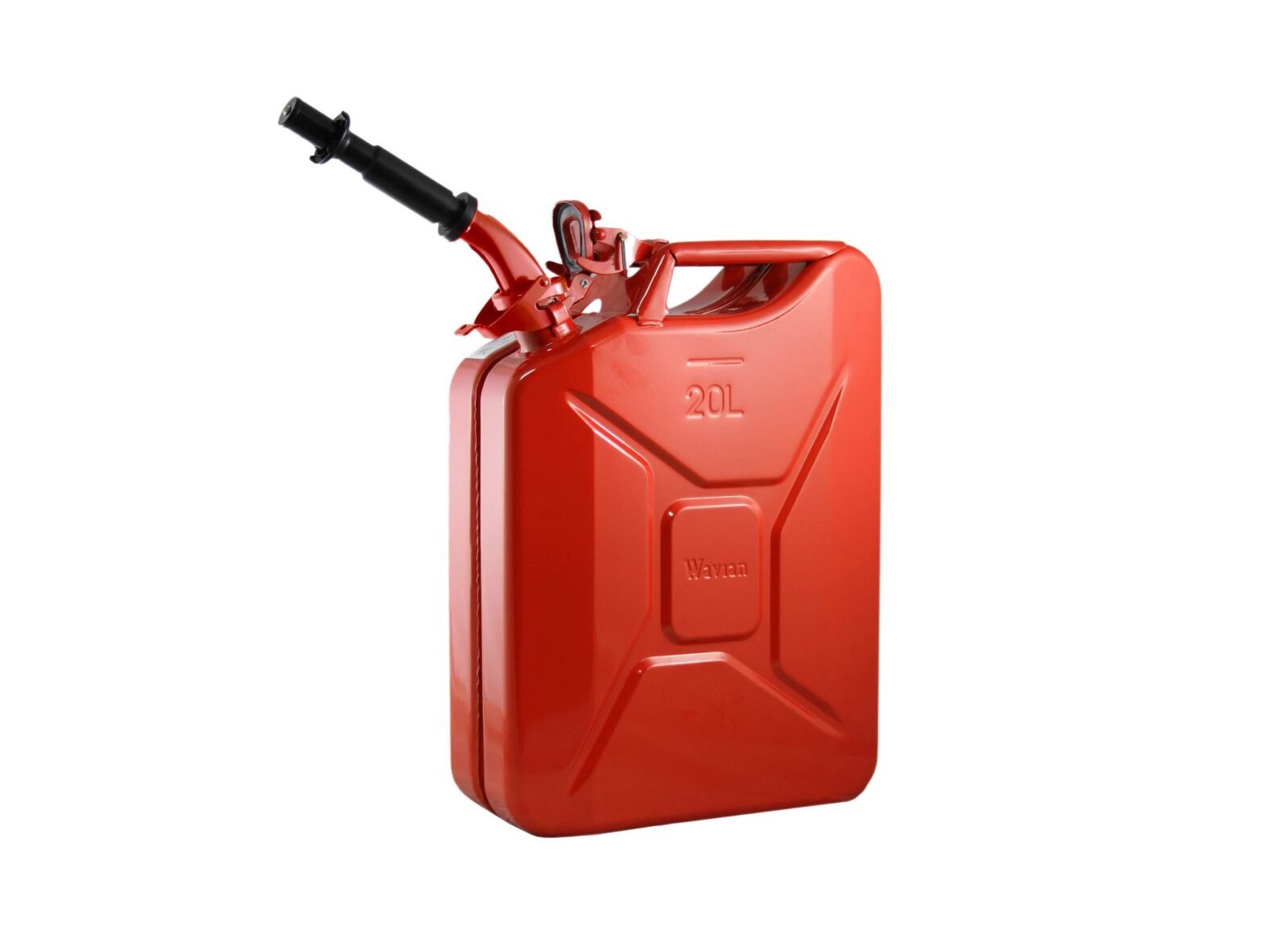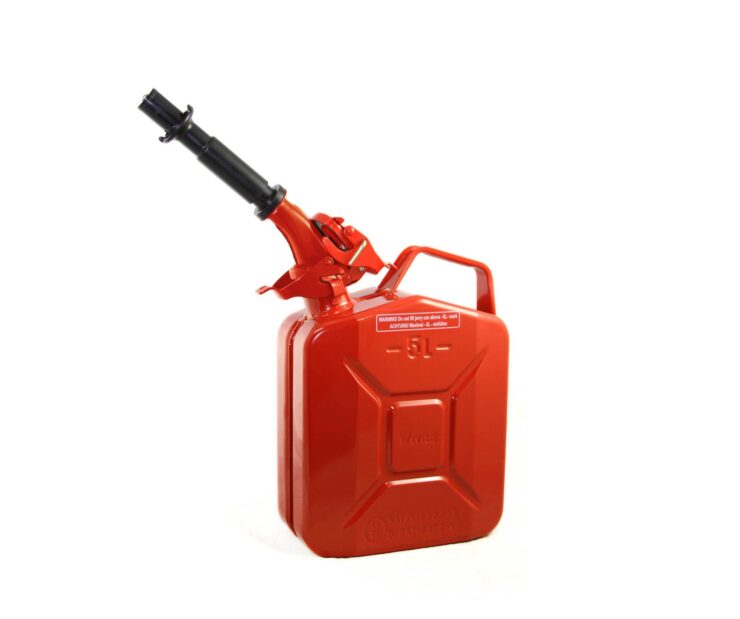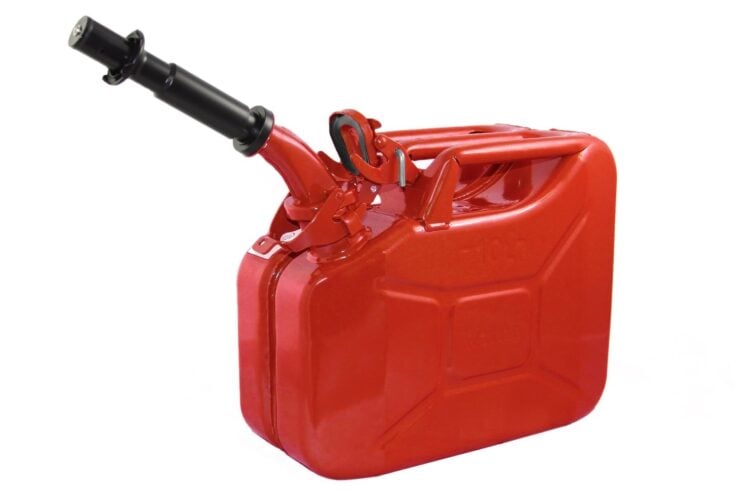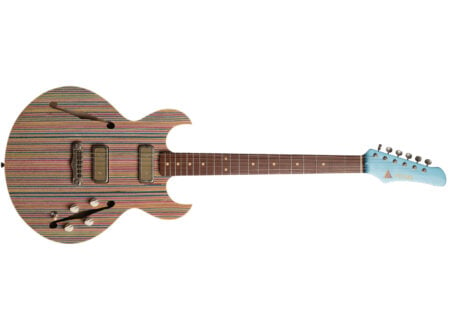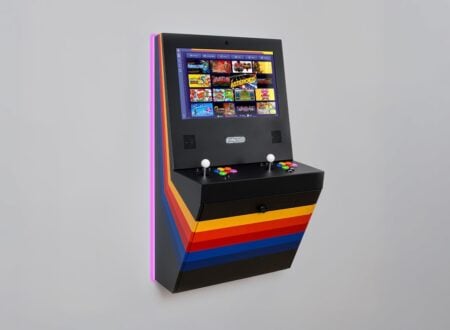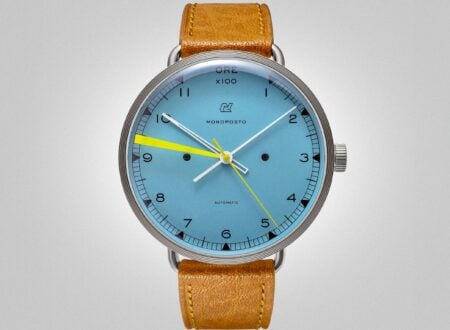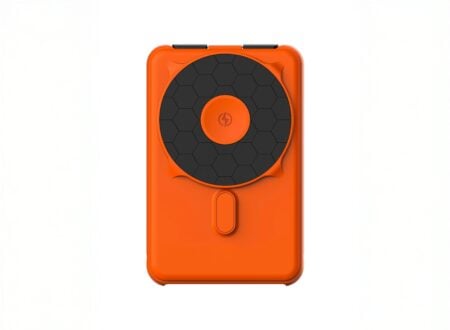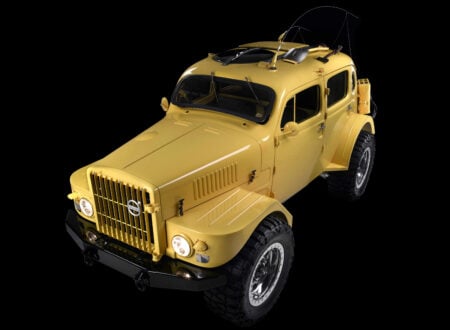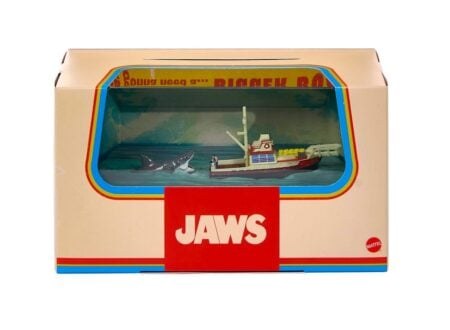The Wavian Fuel Can has been built and supplied to many NATO countries for military use for well over 75 years. They’re leak-proof steel fuel cans that have 0.9 mm steel walls, a rust-proof Rezol lining inside, an internal breather pipe for splash-proof pouring, a three-handle configuration for easy carrying, a leak-proof bayonet closure, and a locking pin for the cap.
The cans are offered in three colors for easy fuel identification, red is used for gasoline (petroleum), yellow is used for diesel, and blue is used for kerosene. Sizing ranges from the original 20 liter capacity to both 5 and 10 liter capacities.
All Wavian fuel cans are manufactured and tested to comply with Australian Standards – AS2906, Swedish Standards – SP, German Standards – TUV/GS, and UN Dangerous Goods. They’re EPA and CARB certified, built to ASMT, NFPA, and DOT standards.
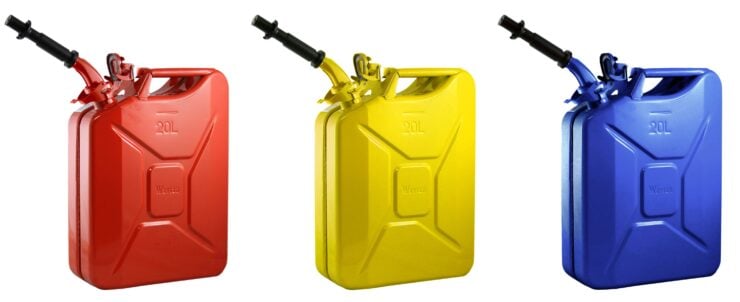

The Jerry can has a fascinating history, originally developed by the Germans and used extensively during WWII they were called “Jerry cans” as “Jerry” was a nickname used by Allied troops to refer to German soldiers.
Jerry cans proved so useful that they were often the first thing pilfered from captured German vehicles, camps, and bases by Allied soldiers. The design has remained largely unchanged in the intervening 75+ years, and they’re still an essential item today for road trips, overlanding adventures, or just a weekend in the woods.

